Our cities are at a pivotal moment. Climate change, geopolitical unrest, economic volatility, artificial intelligence, and rapid technological advancements are reshaping how we live. The pandemic has intensified these changes, prompting a fundamental rethink of our urban environments. How can we create cities that promote social well-being, ecological balance, and human connection? Social sustainability—emphasizing resilience, play, and health—offers a promising framework.
Play as Resilience
Play is far from frivolous; it’s a cornerstone of human resilience. Cities need spaces that encourage laughter, exploration, and joy. Copenhagen’s Tivoli Gardens exemplifies this with its blend of roller coasters, heritage trees, and vibrant green spaces. This kind of playful urbanism can transform our streets, making communities more resilient and better able to respond to adversity.
Urban resilience involves the capacity of cities to absorb, recover, and prepare for future shocks. Incorporating play into urban design strengthens this capacity by promoting social cohesion and mental well-being. Playful environments encourage social interactions, helping build community networks crucial for collective resilience during crises. This shared joy and connection act as an antidote to isolation and loneliness, fostering a sense of belonging.
Moreover, play is a powerful tool for mental health. Studies have shown that playful activities reduce stress and anxiety, thereby improving mental health. Designing cities with spaces that encourage and facilitate play creates environments that support mental resilience, helping residents cope with the challenges of modern urban life. A playful city is a resilient city, ready to face the future.
Health by Design
Urban design profoundly impacts our physical and mental health. Imagine crosswalks that encourage dancing, parks that purify the air, and staircases designed as exercise machines (these do exist but not sufficiently deployed at the scale). Biophilic design, integrating natural elements into urban environments, is essential for promoting vitality. Singapore’s Park Connector Network demonstrates the effectiveness of weaving green spaces into the city, encouraging physical activity and facilitating mental well-being.
This relationship between the built environment and our health is well-documented. Urban areas with accessible parks and green spaces see lower levels of obesity, heart disease, cancer, neurodegenerative diseases, and type 2 diabetes. Regular physical activity is crucial for preventing these chronic conditions, and thoughtfully designed urban spaces encourage more active lifestyles.
Exposure to nature also reduces symptoms of depression and anxiety, improving mental health. Incorporating natural elements into our built landscapes creates restorative environments that promote mental well-being. Green spaces, water features, and natural materials consistently enhance the mental health of urban residents. Health by design is not a luxury but a necessity for thriving cities. This is our wheelhouse as Landscape Architects and Environmental Psychologists!
Designing for Joy
Our cities can be more than efficient machines; they can be joyful playgrounds. Abandoned lots and buildings, underpasses, and rooftops can be transformed into places of wonder and amusement. Copenhagen’s Cirkelbroen and Konditaget Lüders, China’s Lucky Knot Bridge, and Melbourne’s Hosier Lane exemplify how playful design can reimagine urban spaces, fostering creativity and delight.
Joyful urban design invites people of all ages to engage with their surroundings in new and unexpected ways, increasing physical activity, social interaction, and a stronger sense of community. Transforming mundane urban spaces into areas of delight makes cities more livable and enjoyable for all residents.
The aesthetic appeal of playful design also contributes to the cultural vibrancy of a city. Public art installations, interactive sculptures, and whimsical architectural features become iconic landmarks, attracting tourists and boosting the local economy. Cities that embrace joy and creativity in their design distinguish themselves as vibrant and innovative urban centers.
Economic Benefits of Playful Cities
Integrating play into urban design also brings substantial economic benefits. Vibrant public spaces boost tourism, enhance property values, and stimulate local economies. Playful environments encourage spending and support small businesses, creating a virtuous cycle of economic vitality.
Tourism is a major economic driver for cities with engaging public spaces. Attractions like New York’s Governor’s Island, Vancouver’s Stanley Park, and Havana’s Paseo del Prado draw millions of visitors each year, contributing to the local economy through tourism revenue and job creation. Investment in playful urban design boosts cities’ appeal as destinations, fostering economic growth.
Enhanced property values are another significant benefit. Proximity to parks and green spaces increases property values, making these areas more desirable for residential and commercial development. This leads to higher tax revenues for cities, which can be reinvested in further urban improvements, creating a positive feedback loop of economic and social benefits.
Healthcare savings are also notable. Reductions in the incidence of chronic diseases and mental health disorders lower healthcare costs for individuals and society. Implementing more playful urban spaces generates robust economic benefits through improved public health outcomes.
Community Well-being
Playful urban design strengthens community cohesion, mental health, and social interaction. Engaging in playful activities helps people form bonds and fosters a sense of belonging. Inclusivity in play is crucial. They ensure everyone can participate, promoting equity, diversity, and accessibility. Accessible playgrounds and public spaces make it easy for all abilities to participate, promoting equity and social inclusion, breaking down barriers, and creating more cohesive and supportive communities.
Community cohesion is vital for the social fabric of urban areas. Playful environments create opportunities for residents to interact, building relationships, but more importantly building trust. This social capital is essential for neighborhood resilience and collective well-being, fostering stronger, more connected communities.
Mental health improvements are a direct benefit of increased physical activity and social interaction. Playful activities reduce stress, anxiety, and depression, contributing to better mental health outcomes. Designing cities that encourage play creates supportive environments that enhance the mental well-being of all residents.
Ecological Balance
Green spaces and biophilic design contribute to ecological health by absorbing carbon dioxide, reducing urban heat islands, and providing shade. Playgrounds with natural elements connect children to nature, and community gardens connect people to food, each fostering environmental stewardship.
This ecological balance is essential for truly sustainable urban development; one where our natural, food, and delivery systems are more intimately entwined. Trees and green spaces mitigate the effects of climate change by absorbing carbon dioxide and reducing urban heat islands. Incorporating trees and opportunities for more “wild” nature into urban design goes a long way in creating healthier, more sustainable cities. I
Biophilic design has been sadly mislabeled and associated with form-giving in the world of architecture. Truly biophilic design enhances biodiversity in urban areas. Green roofs, vertical gardens, and wildlife-friendly landscaping provide habitats for birds, insects, and other wildlife, contributing to the ecological health of cities. Sustainable urban design is key to creating resilient and vibrant urban environments. Integrating nature into urban play spaces promotes a deeper connection to the environment among residents. It is this connection that ultimately promotes stewardship of the land and empathy for our natural world.
Functional Playgrounds: Beyond Aesthetics
Playful design isn’t just about aesthetics; it’s about functionality. Singapore’s Park Connector Network, an integrated system of green corridors connecting neighborhoods, parks, and waterfronts, promotes physical activity, mental well-being, and ecological balance. Melbourne’s Hosier Lane, a vibrant street art gallery, invites creativity and playfulness, transforming a neglected alley into an outdoor cultural destination.
Functional playgrounds serve multiple purposes. They provide spaces for physical activity, social interaction, and relaxation, contributing to the overall well-being of urban residents. Multi-functional spaces maximizes the positive benefits of these designed environments.
Human-Centric Urban Design
Human-centric design puts people at the heart of urban planning, considering the needs, desires, and well-being of residents. Focusing on the human experience, as well as not at the sake of resiliency planning, will make our cities more livable and enjoyable. The future of urban design lies in creating environments that acknowledge the inner child in all of us. By designing with empathy and creativity, we can shape resilient, inclusive, and vibrant cities.
Imagine a city where building facades encourage climbing, furnishings were instruments, and bridges encourage us to bounce from one side to the other. Urban design should reflect humanity with all its quirks and aspirations. It’s not about sterile efficiency but about celebrating the imperfect, the unexpected, and the delightful – wabi-sabi. Celebrating this leads to engaging and dynamic cities. Cities are also a reflection of ourselves and our values. We have the power to shape this reflection, and create landscapes that embrace play, prioritize health, and honor justice. The future isn’t fixed; it’s a playground waiting to be shaped.

Stair Climber “Push the Button!” / bguppy

Running Track Perimeter / bguppy

“Group Fit” / bguppy
—
Images by Blair Guppy / Project: “Park ‘n’ Play” by JAJA Architects / Copenhagen, Denmark



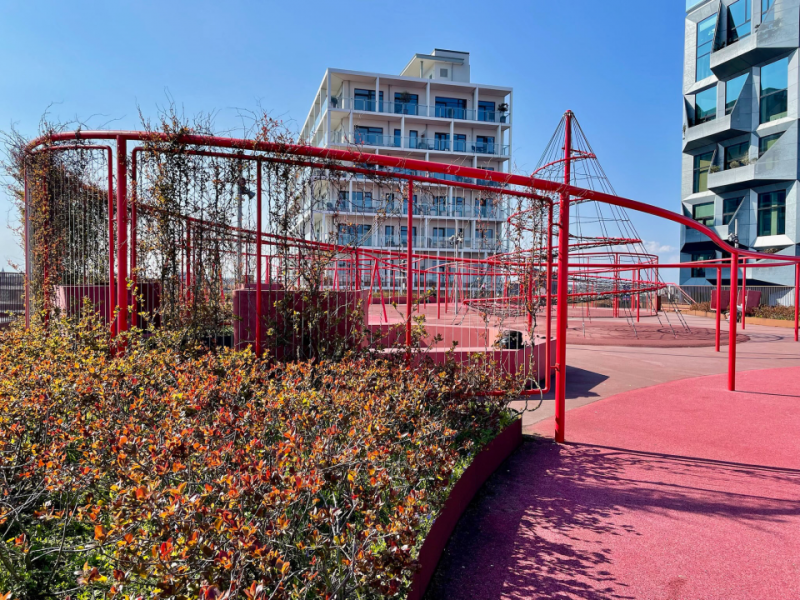


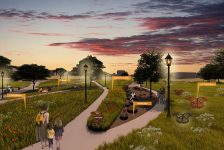

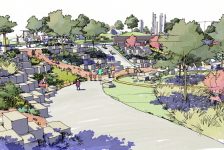
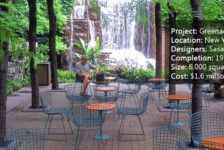
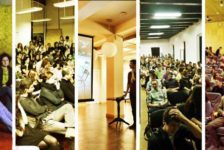
Pingback: Nature in the Metropolis: Blending Green Spaces into Urban Design